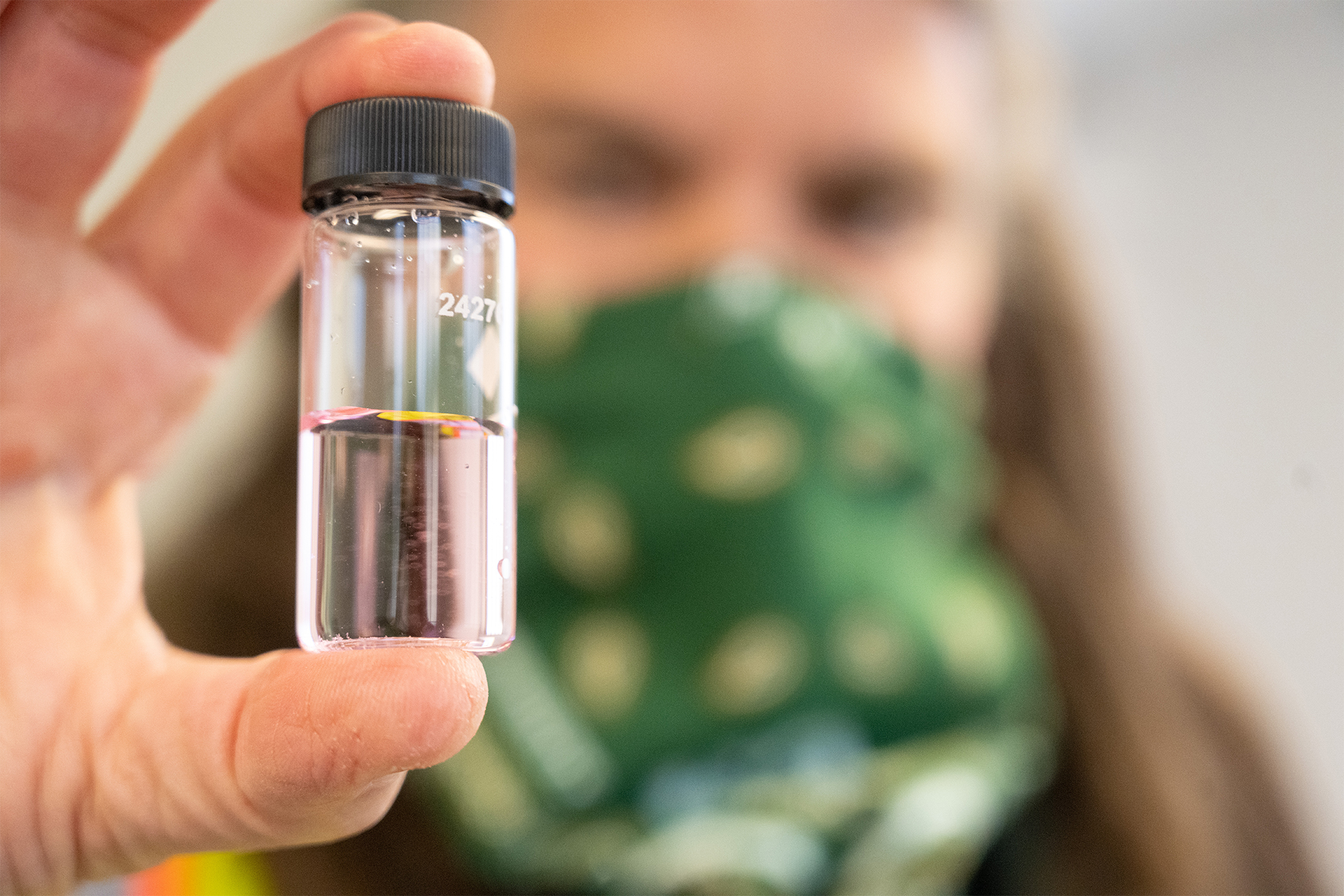
CSU utility engineer Carol Dollard has been tasked with keeping high-quality drinking water available during the COVID-19 pandemic. Photo by John Eisele
Carol Dollard is a big fan of low-flow toilets and sinks … usually. The Colorado State University utility engineer is all about saving money and precious resources, like water. And with just a fraction of the typical number of people using the restrooms on the main campus, CSU is using half the normal amount of water.
So, what’s bugging Dollard?
“With nobody using the bathrooms in these empty buildings, we have to force the water through the pipes to keep it safe. That means flushing, and more flushing, and flushing again,” she said with a laugh. “On a good day I like low-flow toilets, but now I hate them.”
Dollard is one of seven Certified Water Operators at CSU, tasked with keeping high-quality drinking water available during the COVID-19 pandemic, while most buildings are sparsely populated or completely unoccupied. Tim Kemp, assistant director for Engineering and Capital Construction, explained that CSU is considered a consecutive water user, meaning that while water is supplied to campus by the city of Fort Collins, CSU owns and maintains its own water distribution system.
“We are mandated by the state to provide safe and pleasant water,” he said.
Maintaining chlorine levels

Facilities Management staff must go with the flow and flush to ensure optimal water flows and chlorine levels. Photo by John Eisele
For the water to remain “safe and pleasant,” it must test with a chlorine concentration greater than 0.2 milligrams per liter. When classes are in session, employees are working and visitors are visiting campus buildings, water flows and chlorine levels remain constant. But when not enough water is moved through the system, the chlorine dissipates, which can diminish the safety of the drinking water.
“It’s a volume-of-water issue,” Dollard said. “We have to move a certain amount of water and some of our buildings are down to using 14 gallons of water a day.”
And so, as part of their essential duties, Facilities Management custodians go with the flow and flush.
Not all buildings on Main Campus are being flushed as frequently, however. Kemp said there are several buildings on the Main Campus that have lengthy and large diameter plumbing systems that normally serve large numbers of occupants – think Canvas Stadium and Moby Complex – and it is simply not practical to maintain high-quality drinking water when the buildings are empty. Those buildings have signs posted on them warning that the water is temporarily not safe to drink. Once we are ready to occupy these buildings again, CSU staff will flush clean water through these buildings and test to make sure the water is good.
But in buildings like historic Johnson Hall on the Oval, teams are making the rounds to make sure there’s enough flow to go around.
Sara Ferrarese, a custodian with Facilities Management stood across the room (wearing a protective mask) and watched her co-worker Amanda Richter push the handle on a toilet. Next to her, the water faucet in the sink had been running for several minutes.
“We’re just running and flushing,” she said.